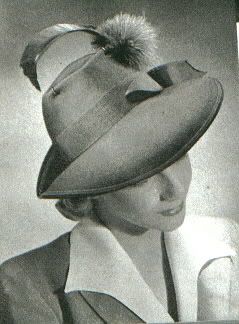thunderw21
I'll Lock Up
- Messages
- 4,044
- Location
- Iowa
From the August 1941 issue of Popular Science in an article about 'Chemurgy' as a weapon for defense.

Nothing else is mentioned in the article. I would have loved to see it up close and personal.
Has anyone ever encountered such a hat? No doubt they didn't go to far with this idea.

Nothing else is mentioned in the article. I would have loved to see it up close and personal.
Has anyone ever encountered such a hat? No doubt they didn't go to far with this idea.














